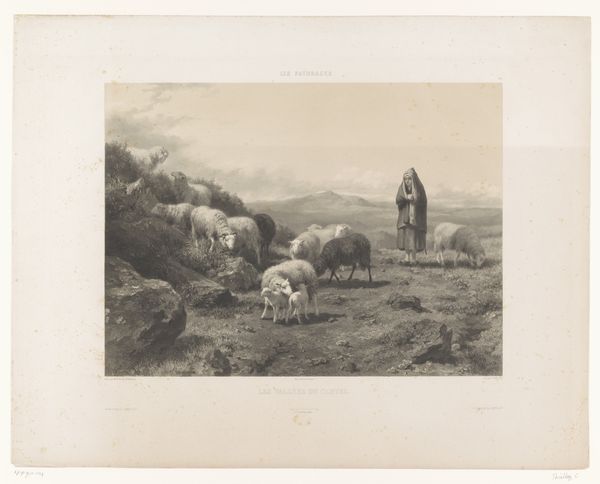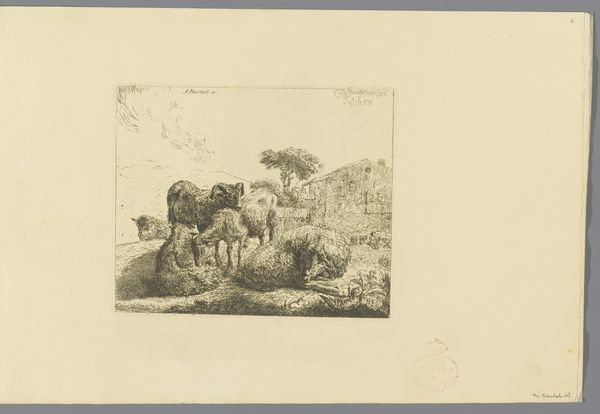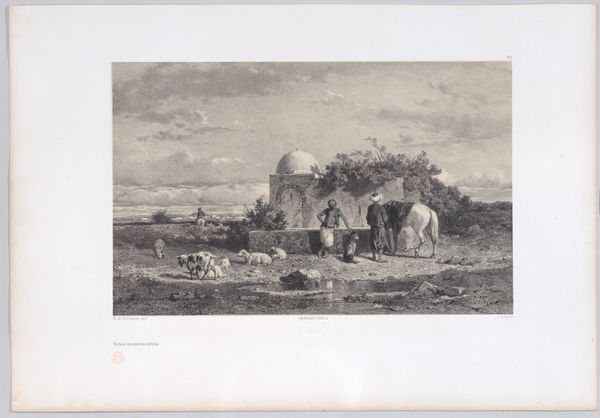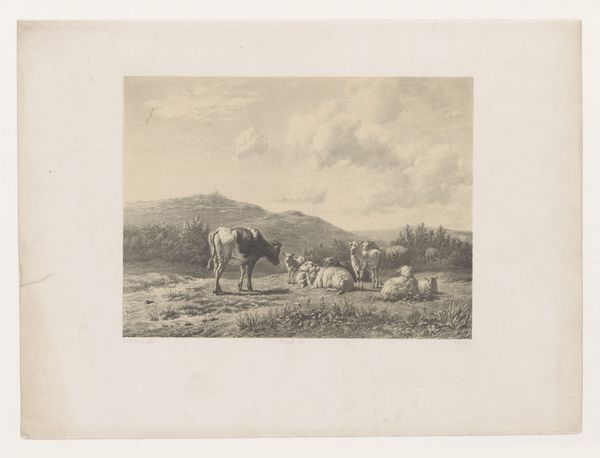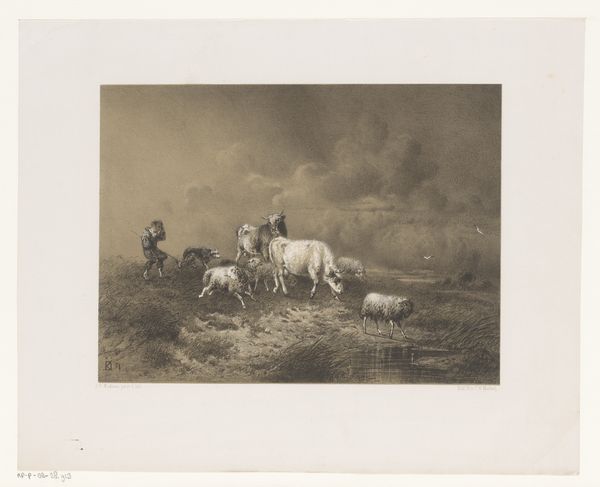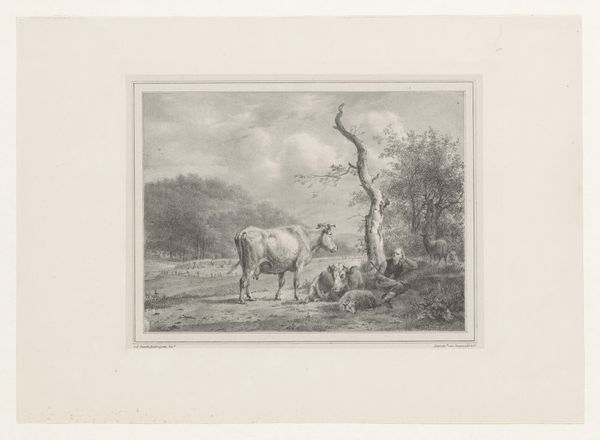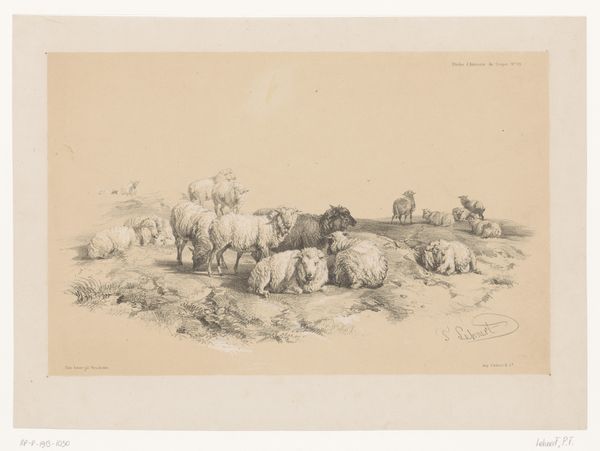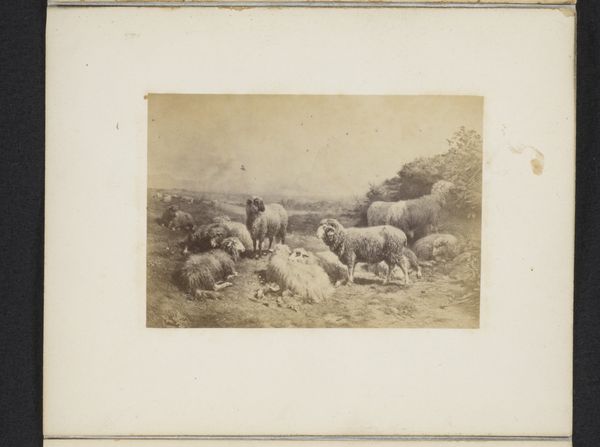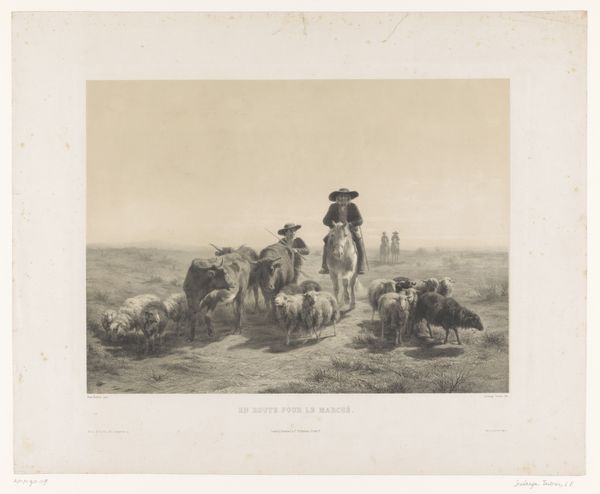
Fotoreproductie van een schilderij van Rosa Bonheur van een herderin met schapen c. 1890 - 1910
0:00
0:00
Dimensions: height 59 mm, width 88 mm
Copyright: Rijks Museum: Open Domain
Curator: So, here we have a photograph titled "Fotoreproductie van een schilderij van Rosa Bonheur van een herderin met schapen," which translates to "Photographic reproduction of a painting by Rosa Bonheur of a shepherdess with sheep." It's dated around 1890-1910. Editor: It's beautifully serene. All soft edges and gentle light, the kind that makes you want to sink into it and never leave. Almost like a faded memory. Curator: Yes, there's a romantic quality to the print and certainly an echo of the original painting, which itself leans into realism, yet through the lens of a burgeoning romantic sentiment towards nature and pastoral life. The material itself is interesting too, printed on a toned paper which mutes the color palette. It’s all about the subtle gradations. This was probably commercially produced. Editor: Commercially produced! It still retains a sense of intimacy. The lone shepherdess watching over her flock, so isolated yet connected. It’s hard to believe it might be some kind of product intended for wider consumption. Is she real or performing? It feels deeply symbolic somehow. Curator: Exactly, we see the industrial era reaching into art. Reproductions like this made art more accessible, shifting both consumption and value. Consider the labor involved in creating the original artwork, versus the labour to reproduce it. The difference in skill and in pay is striking. Also what this mass consumption of 'art' may have done to peoples idea of value. What do you really connect with, the art, or its idea? Editor: It speaks volumes about the longing for simplicity, the desire to escape the grime of industrialization by owning a cheap pastoral print, to romanticise manual labour! Isn’t there a fascinating tension at play? Curator: Precisely! The tension between the idyllic subject matter and the mechanics of its dissemination highlights how deeply interwoven these perceived opposites really are. We must be aware when consuming art or photographic "art" of its place and creation! Editor: What a thought! Suddenly that gentle light has a slightly harder edge. And so a bucolic fantasy becomes a commodity to be considered within the history of late capitalism... That does sober things up a little!
Comments
No comments
Be the first to comment and join the conversation on the ultimate creative platform.
